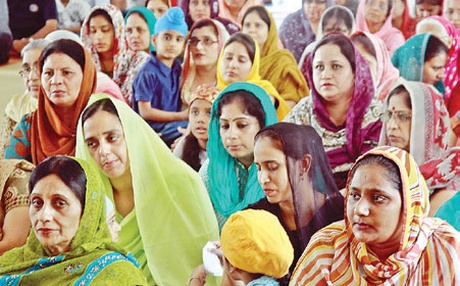Chennai, India: They may have nothing in common with people here, but most of the 300-odd Sikh families that reside in Chennai identify themselves with the local culture.
“I can speak Tamil very fluently and know a smattering of Malayalam as well. So I am both an Iyer Punjabi and Menon Punjabi,” jokes Balbir Singh Lota, general secretary of Sri Guru Nanak Sat Sangh Sabha. Established in the year 1949, the Sabha is a centre for social, religious and spiritual activities and is also a common point for the Sikh families in Chennai to converge during special occasions and festivals.
There is possibly no official record of when the first Sikhs arrived in Chennai, but, it is believed that the migration has been consistent— before partition, during partition and post-partition.
However, there is a name to reckon with, when we talk about the history of Sikh and Punjabi families, in this city. Colonel Gurudeep Gill, the then Inspector-General of Prisons was among the earlier settlers and helped many who reached the city during the difficult period of partition to start from scratch.
Gurnam Singh, whose family hails from Lyallpur, Pakistan and has been a resident of Chennai for several decades, says, “There was even talk of making Gill Nagar a locality for Sikhs and Punjabis, but that never came through.” However, Singh is quick to add that his community now knows the distinction. “We have made the city our home and that is why we never needed just one locality for ourselves,” he says.
Involved in most vocations ranging from real estate, automobile spare parts to catering and hospitality services, Sikhs in Chennai have, over the years, made their presence felt in every sphere. Lota, whose roots lie in Nawanshahr, Punjab, reminisces, “My father came to Chennai in the fifties. I wasn’t born here, but having imbibed the local culture with our traditions, the city is my home.” In chaste Tamil, Lota display his language skills and adds, “We were essentially known for our vocations. My father used to make radio cabinets and his shop was called Balbir Cabinets named after me. Then with the advent of TV, he switched to making TV cabinets.”
Kamaljeet Singh another long-time resident of Chennai reveals another interesting piece of history. “You can track the migration of Punjabis and Sikhs during two partitions that happened—partition of India and Burma. Many traders from our community were settled in Burma, but after the partition they migrated to many places from the East, settling down in various States like Bengal, Assam and later in Tamil Nadu,” he adds.
Kamaljeet Singh summarises what it means to be a Tamilan Punjabi, “My daughter today is in a prominent position in a Tamil channel. We have received a lot from the city and in return we have done our bit for the city,” he says.
Source: Indian Express News
 Sikh Sangat News Celebrating Sikh culture and sharing Sikh voices
Sikh Sangat News Celebrating Sikh culture and sharing Sikh voices


WAHEGURU JI KA KHALSA WAHEGURU JI KI FATEH .
I AM HAPPY TO KNOW ABOUT THE ‘SHRI GURU NANAK SAT SANG SABHA ,HERE IN MADRAS ,NOW OFFICIALLY KNOWN AS CHENNAI . I HAPPENED TO VISIT MADRAS IN THE YEAR 1969 ,WHEN SIKH PANTH CELEBRATED THE QUINCENTENARY OF SHRI GURU NANAK DEV JI . IF I AM NOT AT A MISTAKE THE STATE LEVEL CELEBRATIONS WERE HELD IN AIR FORCE STATION ,GURUDWARA ,TAMBERAM , S. UJJALL SINGH WAS THE STATE GOVERNOR AT THAT TIME ,WHO ALSO VISITED THE GURUDWARA . ANOTHER PROGRAMME WAS ALSO HELD IN A CITY AUDITORIUM ,WHERE TAMIL INTELLECTUALS PAID FLORAL TRIBUTES TO GURU BY EXPLAINING HIS LIFE AND TEACHINGS . SHRI M. KARUNA NIDHI WAS THE CHIEF MINISTER OF MADRAS AT,NOW TAMILNADU . I WAS THEN ON FIELD SURVEY OPERATION MEANT FOR THE NAVIGATION OF THE AERODROME IN THE STATION . THERE AFTER I THINK OF , TO STUDY TAMIL LANGUAGE TOO . IN THE YEAR 1980 ,I PASSED CERTIFICATE COURSE IN TAMIL . BUT COULD NOT VISIT THAT AREA SINCE THEN ,THOUGH VISITED HYDERA BAD MANY A TIMES AFTER THAT .